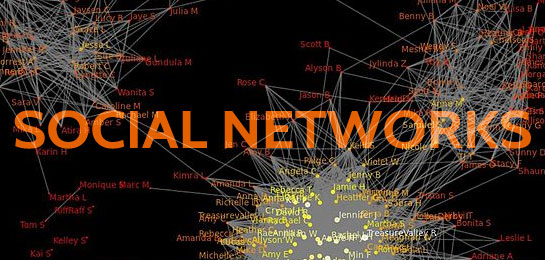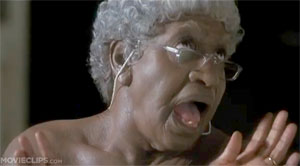
Social networks have revolutionized the way the world communicates, allowing a rapid exchange of information and culture. The twenty-first century is characterized by new technologies in transportation and communication that shrunk the world making it possible for individuals that were geographically far apart from each other to be within close proximity in a short amount of time.
We are embedded within our local communities but simultaneously we’re linked to the global community.
Our knowledge of the world being both big and small makes us more aware of the impact of our actions around the world, and of the fact that at any given moment someone in one of your social networks could connect you with someone else across the globe.
Social Networks Defined
A social network can be defined as a set of relations applied to actors as well as any additional information on those actors and relations. OK, now you’re thinking, what are actors, you mean like Denzel Washington? Amazing actor, but no. Actors are all the people listed in your social networks.
To develop a clearer understanding of what social networks are, answer the following questions.
- Who’s in your immediate family? This would be your family network.
- Who do you hang out with on weekends? This would be your socializing network.
- Who would you get advice from about your professional career? This would be your career advice network.
- Who would you turn to for emotional support? This would be your emotional support network.
- Who would you ask to house-sit for you if you went out of town? This would be your home care network.
Each one of these represent a different social network, and you will notice that some actors overlap multiple social networks. Within the network you also have additional information or attributes about the actors such as gender, age, interests, etc. This additional information becomes increasingly important in social network analysis (SNA), where actors can also be referred to as nodes and vertices.
Let’s take a look at an example of a family network, as defined in the earlier questions.
| NAME | GENDER | AGE |
| Jimi | Male | 32 |
| Sharon | Female | 25 |
| Bill | Male | 46 |
| Sue | Female | 42 |
This table is an example of Jimi’s family network. In the world of SNA, this would be called an ego network, because it is contains a focal actor (Jimi), or ego, and all the people directly connect to the ego. The people connected to Jimi in this network are called alters. So in this example, Jimi is the ego and Sharon, Bill, and Sue are the alters.
Relations in social networks
 When we speak about relations in social networks, we’re not talking about the one’s Grandma Klump spoke of in The Nutty Professor. On the contrary, I want to introduce you to some more SNA terms. In Jimi’s ego network, his family represents a state relation. These include kinship and relations involving trust and friendship. They have a high degree of permanency and/or durability that makes it easy for a researcher to detect. State relation examples include family, close friends, or affiliations with people of the same club, group or church.
When we speak about relations in social networks, we’re not talking about the one’s Grandma Klump spoke of in The Nutty Professor. On the contrary, I want to introduce you to some more SNA terms. In Jimi’s ego network, his family represents a state relation. These include kinship and relations involving trust and friendship. They have a high degree of permanency and/or durability that makes it easy for a researcher to detect. State relation examples include family, close friends, or affiliations with people of the same club, group or church.
On the other end of the spectrum of state relations are event relations. Event relations, on the other hand, tend to be more temporary in nature and don’t necessarily imply a durable relation. So once the event is over, it’s quite possible the relation will be as well. Common examples of event relations are ones made attending conferences, sharing a cup of coffee, sending an email, or even fighting with someone. Since they don’t ensure a permanent state, it’s best to think of these as individual occurrences.
In Conclusion
At this point you should have a basic knowledge of what social networks are and the power of their reach. You’ve even learned some basic terminology on which social network analysis is based. I’ve listed the terms and definitions discussed so you can use as a quick social network reference.
actors, vertices, and nodes = social entities linked together by some relation
ego = the focal actor of interest
alters = the actors ties to an ego
tie = how A and B are connected
relation = a specific set of ties among a set of actors, i.e. friendship, family
actor attributes = additional info about an actor such as age, gender, etc.
ego network = social network of a focal actor, ego, ego’s alters and ties linking ego to alters and alters to alters
social network = a set of relations applied to actors as well as any additional information on those actors and relations.
ShareNOV
2012






